Mistletoe FamilyHarlequin Mistletoe Pale-leaf Mistletoe Harlequin Mistletoe Yellow Form Wire-Leaf Mistletoe
The Harlequin Mistletoe (Lysiana exocarpi) is a member of the Loranthaceae (Mistletoe Family).
With the red, green and yellow colouration of the slender tube-like flower, this mistletoe is known by the common name of ‘harlequin’. The curve shaped flower tube is red, ending in a yellow and green tip. No more than 5 cm in length, found in clusters of 2-3, the flowers are on a very short stalk.
The leaves are hairless narrow and curved with a length between 3-10 cm in length and 1 cm in width.
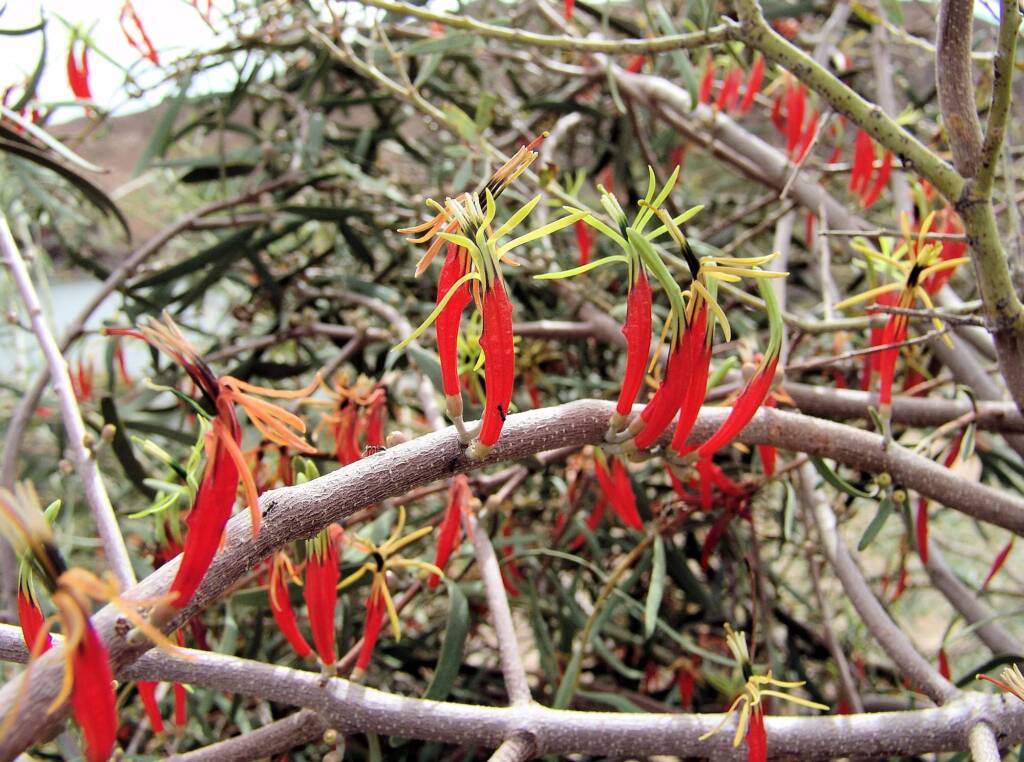

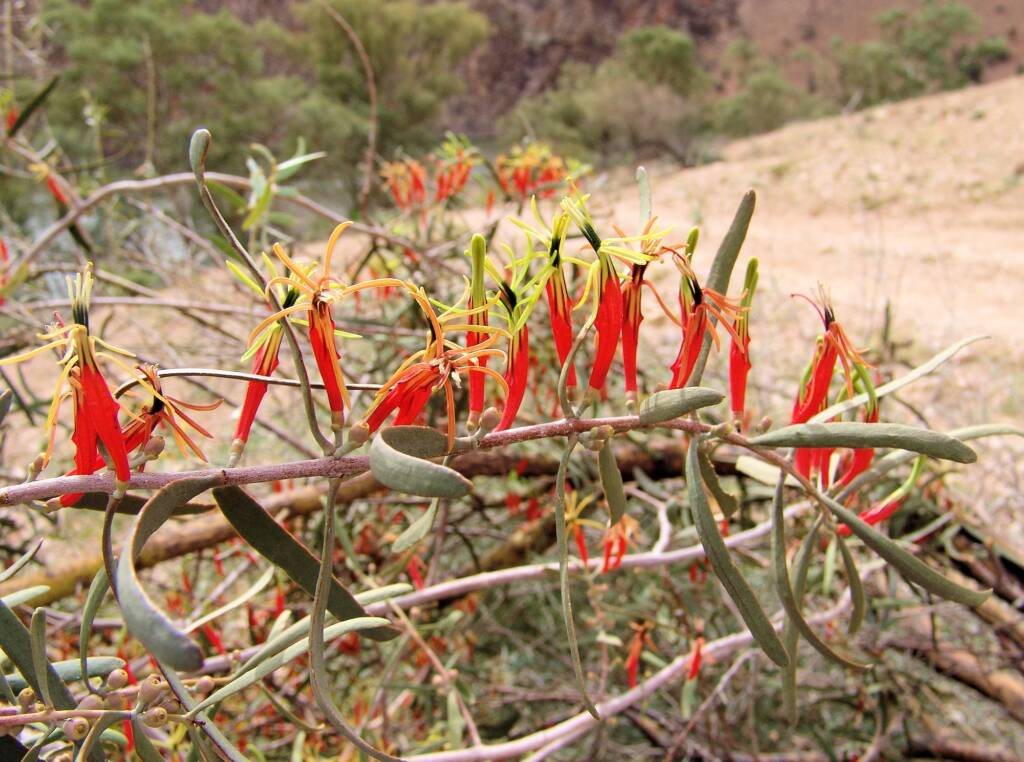
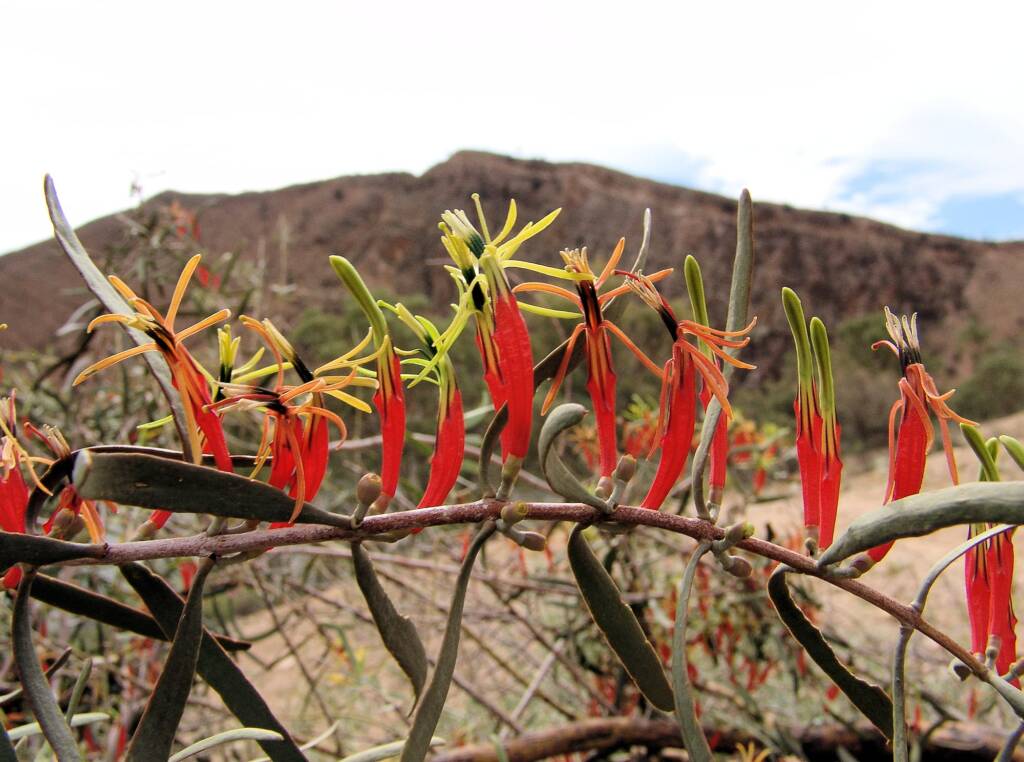


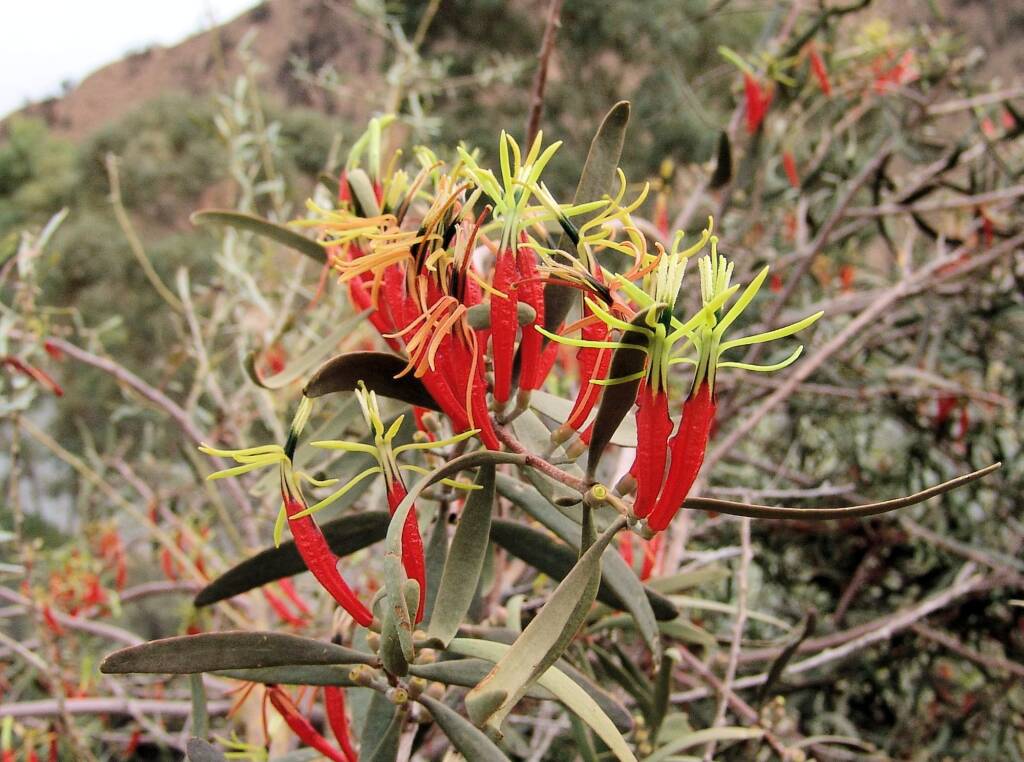
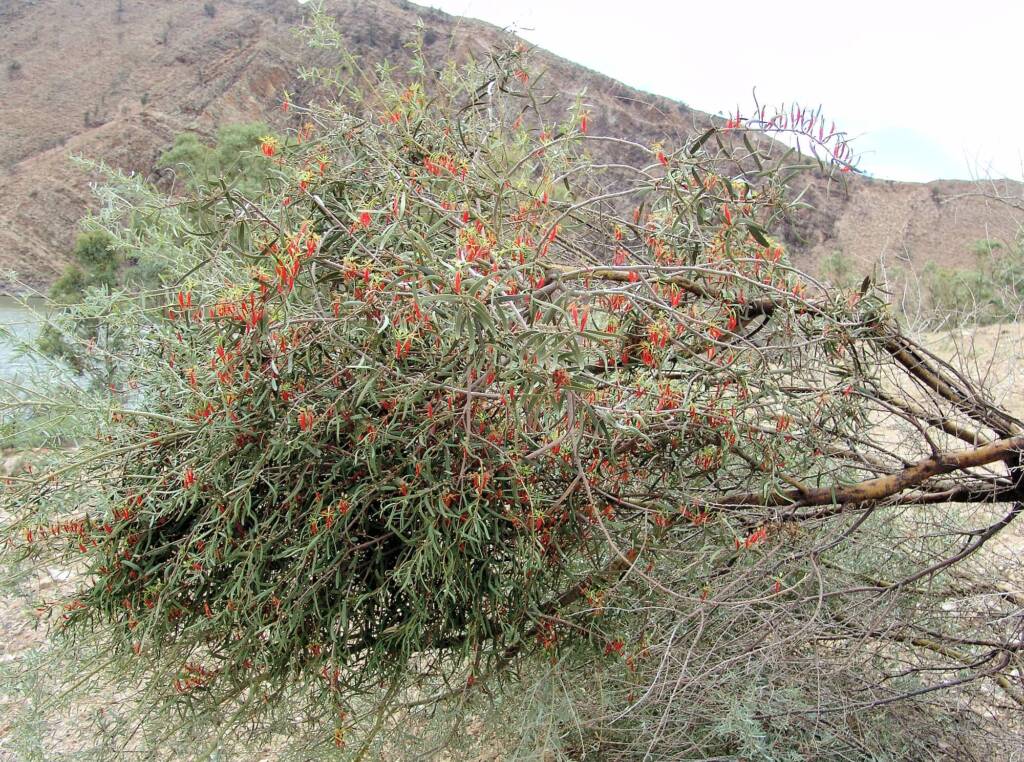

There is also the yellow form of the Harlequin Mistletoe.
Members of the genus Lysiana, the fruit is translucent red or black, and being edible is one of the Aboriginal food.
| Extreme care must be taken when identifying edible food plants and those used in bush medicine. Some bush foods are only edible at different stages of the plant cycle, or when treated appropriately. Bush medicine should only be used under the guidance of a qualified physician. Information here is only provided for research. You should always seek experts in the field to confirm the identification of the plant and whether they are edible or appropriate. |
- Scientific classification
- Kingdom: Plantae
- Clade: Tracheophytes
- Clade: Angiosperms
- Clade: Eudicots
- Order: Santalales
- Family: Loranthaceae
- Genus: Lysiana
- Species: L. exocarpi
- Binomial name: Lysiana exocarpi
- Subspecies:
L. exocarpi subsp. exocarpi
L. exocarpi subsp. tenuis

Mistletoe FamilyHarlequin Mistletoe Pale-leaf Mistletoe Harlequin Mistletoe Yellow Form Wire-Leaf Mistletoe
FloraFlora in Australia Flora Index Acacia Anigozanthos (Kangaroo Paws) Annual Yellowtop Apium prostratum subsp. prostratum var filiforme Apple Bush (Pterocaulon sphacelatum) Australian Bluebell Australian Gossypium Banksia Batswing Coral Tree Billy Buttons Birdsville Indigo Blue Pincushion Bush Banana Callistemon Callitris drummondii (Drummond’s Cypress Pine) Calothamnus quadrifidus Cape Honeysuckle Cassia fistula (Golden Shower) Cattle Bush Common Heath Crotalaria Darwinia wittwerorum (Wittwer’s Mountain Bell) Daviesia oppositifolia (Rattle-pea) Desert Oaks Drumsticks Eremophila Eucalyptus Ficus Flannel Cudweed (Actinobole uliginosum) Georges Indigo Goatshead Burr (Sclerolaena bicornis) Golden Everlasting Goodenia Gossypium Grass and Grasses Grass Trees Grevillea Grey Germander Hakea Kapok Bush (Aerva javanica) Lambertia sp Leptospermum MacDonnell Ranges Cycad Maireana scleroptera Mexican Poppy Minnie Daisy Mistletoe Family Nardoo Native Apricot Nicotiana megalosiphon subspecies sessilifolia Nuytsia floribunda Orange Spade Flower Orchidaceae Parakeelyas (Calandrinia) Pebble Bush (Stylobasium spathulatum) Perennial Yellow Top Pink Everlasting Pink Rock Wort Poached Egg Daisy Portulaca Proteaceae Ptilotus Quandong Resurrection Fern Rosy Dock Ruby Saltbush Santalum Solanum Spike Centaury Spinifex Storkbill (Erodum cygnorum) Striped Mint Bush Sturt’s Desert Pea Sturt’s Desert Rose Tall Saltbush Tangled Leschenaultia Tar Vine Tribulus eichlerianus Upside-down Plant Urodon dasyphylla Variable Daisy Waratah (Telopea) Wertabona Daisy White Cedar (Melia azedarach) White Indigo White Paper Daisy Wild Passionfruit Wild Stock Woolly-Headed Burr Daisy Woolly Bush Yellow-keeled Swainsona
